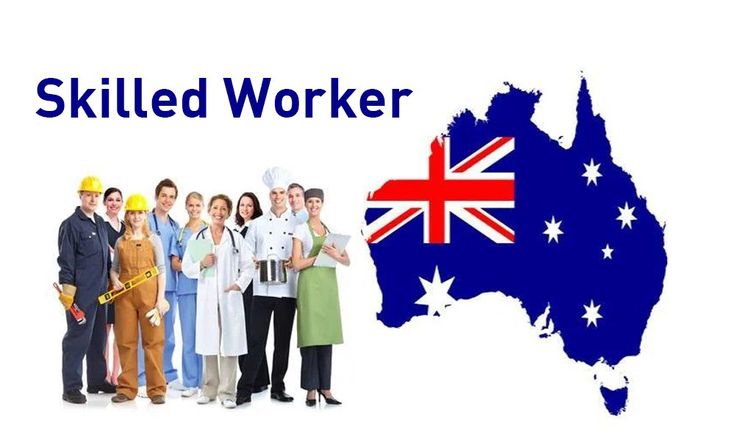Australia’s Subclass 482 (TSS) Visa is a vital pathway for skilled workers seeking to contribute to the nation’s dynamic economy. This comprehensive guide covers everything from eligibility requirements and application procedures to the impact of policy changes on your migration journey. Whether you are an employer looking to fill a skill shortage role or a skilled professional planning your next career move, this guide offers deep insights and practical tips to help you navigate the process with confidence.
Understanding the Subclass 482 (TSS) Visa
The Temporary Skill Shortage (TSS) visa allows Australian employers to address labor shortages by sponsoring skilled workers from overseas for positions that cannot be filled locally. This visa is divided into short-term and medium-term streams, each with distinct eligibility criteria and conditions. The short-term stream is designed for roles where the demand may be temporary, while the medium-term stream provides a pathway for longer-term residency and possible future permanent opportunities.
Results
#1. Which continent are you currently living in?
#2. What is your preferred work location?
#3. What is your current employment status?
#4. What is your gender?
#5. What is your highest completed level of education?
#6. What type of work are you most interested in?
The TSS Visa is not only crucial for enhancing Australia’s economic growth but also for fostering a diverse multicultural workforce. Its flexible framework has similarities with other international talent sponsorship programs such as Engineering Roles in Germany with Sponsorship, where validating technical skills and industry expertise remains paramount.
Key Features and Eligibility Requirements
Who Can Apply?
The Subclass 482 visa is available to skilled workers who:
- Have the required qualifications and work experience relevant to the nominated occupation.
- Are sponsored by an approved Australian employer.
- Meet health, character, and language requirements.
Applicants must also prove that their skills match the needs of the sponsoring organization through skills assessments and relevant certifications. Employers play a critical role, as they must demonstrate that they have made genuine attempts to source local talent before opting for international recruitment.
For professionals evaluating international opportunities, the application procedure shares similarities with markets like the Middle East. In fact, some processes resonate with those outlined for Teaching Jobs in the UAE (Dubai/Abu Dhabi) with Sponsorship Packages, where the sponsorship model is similarly robust.
Core Eligibility Criteria
To be eligible for the TSS Visa, applicants must satisfy several key criteria:
- Skill Set Matching: Your occupation must be on the relevant skilled occupation list, and you must have the proper qualifications or experience.
- Employer Sponsorship: Securing a sponsorship from an Australian business is mandatory. This sponsor also commits to providing a salary at market rates, ensuring that the employment is genuine.
- English Proficiency: Proof of English language competence is required, often through standardized tests or evidence of previous education in English-speaking institutions.
- Health and Character Checks: Applicants need to pass rigorous health assessments and obtain police clearances to ensure they meet Australia’s strict safety standards.
These requirements ensure that only qualified professionals gain entry, thereby protecting Australia’s labor market and preserving high service standards across industries. Similar benchmarks are seen in frameworks such as Nursing Opportunities in New Zealand for Foreign Nurses + Visa Info, underscoring global standards.
Detailed Application Process
Step 1: Securing a Sponsorship
The foundation of a successful TSS Visa application is obtaining sponsorship from an approved Australian employer. This sponsorship confirms that there is a legitimate job offer, and it enables the employer to demonstrate that the position cannot be filled by the local workforce. Employers must also comply with labor market testing requirements, which typically involve advertising the role to ensure genuine local demand.
Employers and applicants alike must prepare a comprehensive set of documents. For example, an employer might mention aspects of their role that are reminiscent of Truck Driver Jobs in Australia: Visa Sponsorship & Licensing—where demonstrating the need for specific skills is critical.
Step 2: Lodging the Visa Application
Once you secure a sponsorship, you must gather all required documentation and submit your application online. This step requires careful attention to detail to ensure that every form is correctly completed and that the necessary supporting evidence is included. Documents typically include:
- Identification proofs such as passports.
- Educational certificates and skills assessments.
- Employment references and detailed work experience.
- Evidence of English language proficiency.
- Health examination reports and police clearance certificates.
The digital submission process is designed to streamline processing times. Many applicants appreciate this system as it reduces paperwork and facilitates communication, similar in efficiency to processes observed in Teaching Jobs in the UAE (Dubai/Abu Dhabi) with Sponsorship Packages.
Step 3: Processing and Decision
After submission, the Department of Home Affairs will assess your application. This evaluation phase involves checking your documents, verifying your credentials, and determining whether the nominated role meets genuine labor needs. The processing time may vary based on factors such as:
- The completeness of your application.
- The current processing workload.
- The complexity of the nominated occupation.
Applicants are advised to maintain regular communication with their sponsors or migration agents during this period. Staying proactive can mitigate potential delays. The thoroughness of this process is essential to ensure that only qualified candidates are granted entry—much like the rigorous assessments found in Engineering Roles in Germany with Sponsorship.
Visa Duration, Work Conditions, and Renewal Options
Duration and Work Rights
The TSS Visa is granted for a specified period based on the nature of the job and the employment contract. Under the short-term stream, the visa generally lasts up to two years (with some occupations eligible for one year only), while the medium-term stream may provide a visa valid for up to four years with a possible pathway to permanent residency.
Visa holders are authorized to work only for the sponsoring employer and in the nominated position. Any changes in employment require notifying the Department of Home Affairs and, in some cases, lodging a new application. The specificity of these work conditions is designed to ensure that the labor market is not adversely affected.
Renewal and Pathway to Permanent Residency
Renewal options under the TSS Visa provide flexibility for both employers and employees. In the medium-term stream, after holding the visa for three years, applicants may become eligible for permanent residency through the Employer Nomination Scheme. Regular review of your employment status and meeting ongoing performance criteria are key factors in successfully transitioning from a temporary visa to permanent residency.
Many find that the structured nature of this process bears similarity to systems abroad. For instance, applicants sometimes draw parallels to Teaching Jobs in the UAE (Dubai/Abu Dhabi) with Sponsorship Packages, where sustained performance and compliance with sponsorship conditions open long-term opportunities.
Navigating Regulatory Changes and Industry Updates
Australia’s immigration policies are subject to frequent updates that reflect current economic trends and national labor market demands. Keeping abreast of these changes is crucial for both employers and prospective visa applicants.
Staying Informed
- Official Sources: Regularly check the Department of Home Affairs website and official government communications to obtain the latest information on policy updates and changes in visa conditions.
- Professional Advice: Consultation with registered migration agents or legal experts can help clarify any ambiguities and provide guidance tailored to your specific situation.
- Industry Forums: Engaging with professional communities and forums can offer peer insights into the latest regulatory interpretations and practical experiences.
For instance, the evolution of visa conditions for sectors like Nursing Opportunities in New Zealand for Foreign Nurses + Visa Info demonstrates how regulatory adjustments can open up new opportunities or, conversely, tighten entry criteria.
Impact of Global Economic Trends
Global economic trends and labor market demands have a direct impact on the eligibility criteria and processing times for the TSS Visa. Shifts in economic conditions in both Australia and overseas necessitate continuous updates to the skilled occupation lists. This dynamic environment means that employers must adjust their recruitment strategies accordingly while ensuring they remain compliant with current laws.
Staying proactive and informed helps ensure that both employers and employees can successfully navigate changes. Similar proactive measures are taken by organizations in Engineering Roles in Germany with Sponsorship to keep pace with evolving industry demands.
Table 1: Job Opportunities for TSS Visa Holders
Below is a table highlighting various job-related opportunities that may be relevant for those considering pathways similar to the TSS Visa. The positions listed are geared toward highly skilled professionals, each accompanied by salary expectations in AUD.
| Job Opportunity | Salary Expectation (AUD) |
|---|---|
| Chef Positions in Australia: Visa Sponsorship for Culinary Professionals | 55,000 – 70,000 |
| Warehouse Operative Jobs in Germany with Visa Assistance | 45,000 – 60,000 |
| Early Childhood Educator Jobs in Australia with Visa Sponsorship | 50,000 – 65,000 |
| Entry-Level Jobs in the UK with Visa Sponsorship for Recent Graduates | 40,000 – 55,000 |
This table provides an overview of employment opportunities that complement the TSS Visa, offering insights into various sectors and the compensation packages available to skilled professionals.
Table 2: Scholarships & Educational Opportunities
Many skilled professionals and their families pursue further education or training after migrating. The table below outlines several scholarship opportunities that may be of interest to TSS Visa holders seeking additional credentials or research funding.
| Scholarship/Educational Opportunity | Eligibility/Details |
|---|---|
| Top 10 Fully Funded Scholarships for International Students Worldwide (2025-2026) | For outstanding students seeking complete financial coverage. |
| How to Secure Scholarships in Canada for Masters & PhD Programs | For applicants with excellent academic records and research proposals. |
| USA University Scholarships for International Undergraduates | Targeted at high-achieving undergraduates planning to study in the USA. |
| Scholarships in Australia Without IELTS/TOEFL | Tailored for students meeting alternative English proficiency requirements. |
These educational opportunities allow TSS Visa holders and their dependents to enhance their qualifications, potentially opening up further career opportunities and academic excellence.
Table 3: Alternative Visa Options and Pathways
For those interested in exploring additional or complementary migration pathways, the table below presents several alternative visa options along with their key features. These options may serve as backup plans or additional routes for skilled professionals.
| Visa Option | Key Feature |
|---|---|
| Working Holiday Visa Jobs in New Zealand: Top Sectors | Offers temporary work and travel experiences for young professionals. |
| New Zealand Green List: Fast-Track Residency for Skilled Workers | Provides a rapid pathway to permanent residency for in-demand professionals. |
| USA Green Card through Employment: EB Categories Explained | Focuses on employment-based immigration channels leading to permanent residency. |
| Post-Graduation Work Permit (PGWP) in Canada | Enables international graduates to gain valuable work experience post-study. |
| Understanding the Blue Card Scheme for Working in the EU | Grants long-term residency and work rights for highly skilled workers in the EU. |
Exploring these additional pathways can be beneficial for those who seek alternative or supplementary immigration options alongside the TSS Visa.
Advantages of the Subclass 482 (TSS) Visa
Flexibility and Global Mobility
One of the main advantages of the Subclass 482 visa is the flexibility it offers both employers and employees. Employers can address immediate labor shortages, and skilled professionals can rapidly integrate into the Australian workforce. The visa not only simplifies the recruitment process but also provides a pathway to a longer-term future—especially in industries where expertise is in high demand.
Such adaptability is essential in a globalized world where industries must continuously evolve. In many ways, this visa mirrors the global talent mobility seen in Engineering Roles in Germany with Sponsorship, where international expertise meets local needs.
Bridging the Skills Gap
Australia’s economy thrives on skilled labor, and the TSS Visa is instrumental in bridging critical skills gaps across various sectors. Employers can fill roles that require niche skills, while employees benefit from the opportunity to work in a vibrant economy and gain exposure to international best practices.
The TSS Visa fosters an environment of innovation and competitive growth, as industries are not limited by local talent shortages. This dynamic is similar to recruitment models seen in Warehouse Operative Jobs in Germany with Visa Assistance, where specialization and expertise are key.
Compliance, Reporting, and Employer Obligations
Maintaining Compliance
Employers sponsoring TSS Visa holders must adhere to rigorous standards and reporting requirements. Compliance is monitored closely by the Department of Home Affairs to ensure that sponsored positions are genuine and that there is no exploitation of the system. This includes:
- Regular audits and on-site inspections.
- Maintaining proper records of the employment conditions.
- Reporting any changes in the employment circumstances promptly.
For some businesses, this compliance framework can be as challenging as other international immigration programs, such as those referenced in USA Green Card through Employment: EB Categories Explained, where detailed reporting ensures transparency and fairness.
Employer Reporting Obligations
In addition to compliance, employers are responsible for keeping detailed records related to:
- The work performance and conduct of the visa holder.
- The ongoing need for the sponsored position.
- Any updates to the terms of employment or job description.
These obligations help create a balanced environment where both employee rights and employer responsibilities are protected.
Challenges and Common Pitfalls
While the Subclass 482 visa offers numerous benefits, both employers and applicants may face challenges along the way.
Navigating Documentation and Deadlines
One of the most common challenges involves ensuring that every document submitted is accurate, complete, and within the required timelines. Any discrepancies or omissions can lead to delays or even refusals. The application process demands that all certificates, references, and assessments be up-to-date and verifiable. Meticulous attention to detail is therefore essential.
For example, applicants might encounter similar challenges to those in Teaching Jobs in the UAE (Dubai/Abu Dhabi) with Sponsorship Packages, where strict documentation standards are a prerequisite to progressing in the visa process.
Managing Expectations and Career Planning
Another potential pitfall is the misalignment between an applicant’s career expectations and the realities of the visa conditions. The Subclass 482 visa ties you to a specific employer and role, which means that any change requires a formal process. Prospective applicants must therefore carefully consider their long-term career objectives and ensure that the sponsored role aligns with their professional plans.
Balancing career ambitions with regulatory constraints requires strategic planning and sometimes even consultation with career advisors. This reality is also observed in other international models like Nursing Opportunities in New Zealand for Foreign Nurses + Visa Info, where clear career pathways are crucial.
Strategies for a Successful Application
Preparation and Professional Advice
A successful TSS Visa application is built on early preparation and seeking professional advice. Engage with migration agents or legal professionals who specialize in Australian immigration law to ensure that your application is comprehensive and adheres to all current guidelines. Such expert consultations can help identify potential issues early, allowing for timely remediation.
Professional advice can prove particularly valuable when your occupation falls under specialized categories. For instance, if you are exploring roles similar to those mentioned in Teaching Jobs in the UAE (Dubai/Abu Dhabi) with Sponsorship Packages, experienced guidance can streamline your application process.
Staying Organized and Informed
Organizational skills are critical. Create a checklist of all necessary documentation, track deadlines, and use digital tools to manage your application process. Regularly review updates from the Department of Home Affairs and join relevant professional groups or forums for real-time advice.
By maintaining an organized approach, you minimize errors and increase your chances of success. This methodical approach is not unlike the strategies used in sectors like Chef Positions in Australia: Visa Sponsorship for Culinary Professionals, where precision and organization are key to meeting high standards.
The Impact on Career Growth and Economic Contribution
The Subclass 482 visa not only acts as a gateway for skilled migration but also significantly impacts career growth and economic contribution. Visa holders bring fresh ideas, global expertise, and a drive for innovation that can be transformative for Australian businesses.
Enhancing Workforce Diversity
Bringing in international talent helps diversify the workplace and fosters an environment where different perspectives can lead to innovation. The skills and experiences of TSS Visa holders can fill critical gaps, promote competitive business practices, and ultimately contribute to Australia’s position as a global economic leader.
Long-Term Career Development
Many professionals who arrive on a TSS Visa eventually explore pathways to permanent residency. This progression encourages continuous professional development, improved skill levels, and a commitment to contributing to the local economy. Such career growth benefits are echoed in global models like Entry-Level Jobs in the UK with Visa Sponsorship for Recent Graduates, where structured career pathways are built upon initial sponsorship.
Comparative Insights: TSS Visa vs. Other International Programs
While the Subclass 482 visa is uniquely tailored to Australia’s labor market, it shares common attributes with other international immigration programs. Comparing these systems can provide valuable insights for both employers and applicants.
International Similarities
Many countries have developed sponsorship programs to address their own labor shortages. For example, programs in the USA, Canada, and parts of Europe similarly require a combination of skill validation, employer sponsorship, and rigorous documentation. These measures ensure that only highly skilled professionals are brought in to support critical industries.
Unique Advantages of the TSS Visa
Australia’s TSS Visa stands out for its flexibility, comprehensive employer obligations, and clear pathways for transitioning to permanent residency. This robust framework ensures that the immigration process remains responsive to fluctuating economic conditions and labor market demands. In this regard, the TSS Visa can be seen as a model of efficiency and fairness, much like the high standards maintained in Understanding the Blue Card Scheme for Working in the EU, which similarly streamlines entry for skilled workers while protecting local labor interests.
Future Prospects and Policy Developments
Looking ahead, the landscape of temporary skill shortage visas in Australia is likely to evolve in response to emerging economic conditions, technological advancements, and global migration trends.
Anticipated Changes
- Digital Transformation: Further integration of digital tools in the visa application process is expected to enhance efficiency and reduce processing times.
- Policy Reviews: Regular reviews and adjustments to the skilled occupation list ensure that the TSS Visa remains responsive to current labor market demands.
- Enhanced Support: As more employers and employees engage with the system, additional support and guidance measures may be introduced to assist with compliance and integration.
Preparing for the Future
Prospective TSS Visa applicants should continuously monitor policy updates and consider building relationships with migration experts. Being proactive not only improves your application’s success rate but also ensures that you remain informed about long-term career opportunities.
The proactive approach required for the TSS Visa process is reminiscent of strategies employed in international systems such as Post-Graduation Work Permit (PGWP) in Canada, where being informed and prepared is essential to success.
Frequently Asked Questions (FAQs)
What is the primary purpose of the Subclass 482 (TSS) Visa?
The TSS Visa allows Australian employers to sponsor skilled overseas workers in occupations where a local talent shortage exists. It ensures that companies can access the necessary expertise to maintain competitiveness.
Who is eligible for the TSS Visa?
Eligibility requires meeting specific skill and qualification requirements, having employer sponsorship, proving English language proficiency, and passing health and character assessments.
How long is the TSS Visa granted for?
The visa duration depends on the nominated role and stream. The short-term stream typically lasts up to two years, while the medium-term stream may extend up to four years, with a possible pathway to permanent residency after three years.
Can I change employers while on a TSS Visa?
Changes to your employment generally require notification to the Department of Home Affairs and, in some cases, lodging a new application. It is essential to adhere to the conditions of your visa.
For additional clarifications or expert advice, consider reviewing resources related to Working Holiday Visa Jobs in New Zealand: Top Sectors, which provides guidance on navigating visa conditions for temporary work.
Conclusion
🎓 Must Read
The Australia Subclass 482 (TSS) Visa serves as a powerful instrument for bridging skills gaps in the Australian labor market while offering skilled professionals an opportunity to enhance their careers in a diverse and dynamic economy. From understanding basic eligibility requirements and navigating the detailed application process to managing compliance and capitalizing on career growth, this guide highlights the critical components essential for successful sponsorship and long-term integration.
Key advantages include the flexibility of the visa, the clear pathways to permanent residency, and the economic benefits for both employers and employees. Staying organized, informed, and proactive by consulting with professionals can dramatically improve your chances of success.
As policy changes and global economic trends continue to evolve, the TSS Visa remains a cornerstone of Australia’s commitment to innovation, diversity, and sustained economic growth. Preparing early and engaging with expert advice are vital steps that pave the way for successful integration into the Australian workforce.
For more in-depth insights and to explore additional employment or scholarship opportunities, be sure to review the tables above and consult our regularly updated resources.









